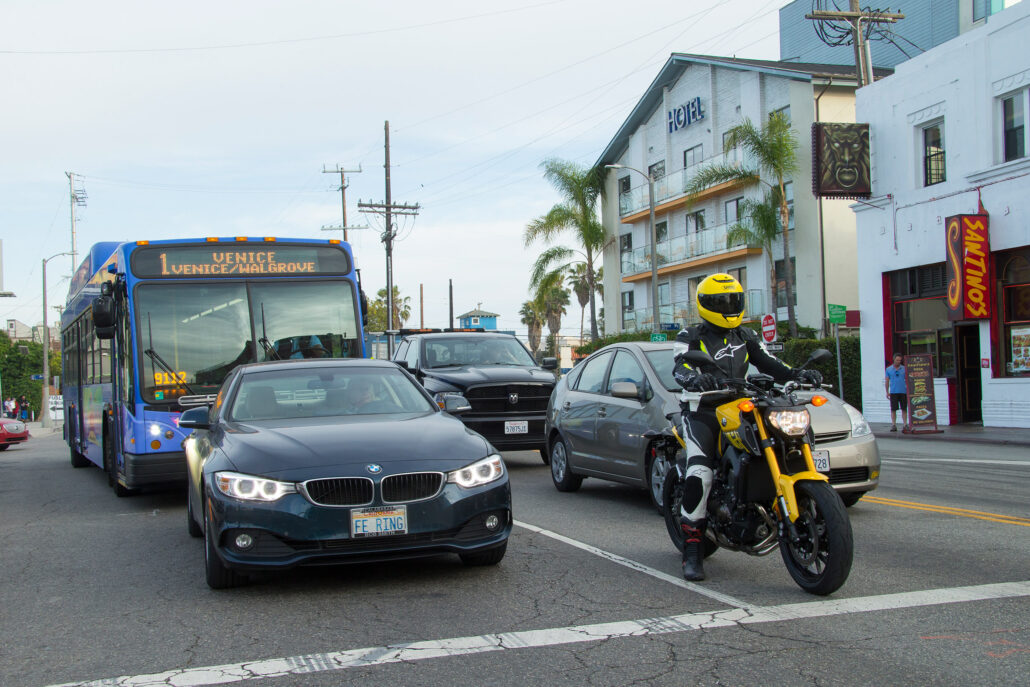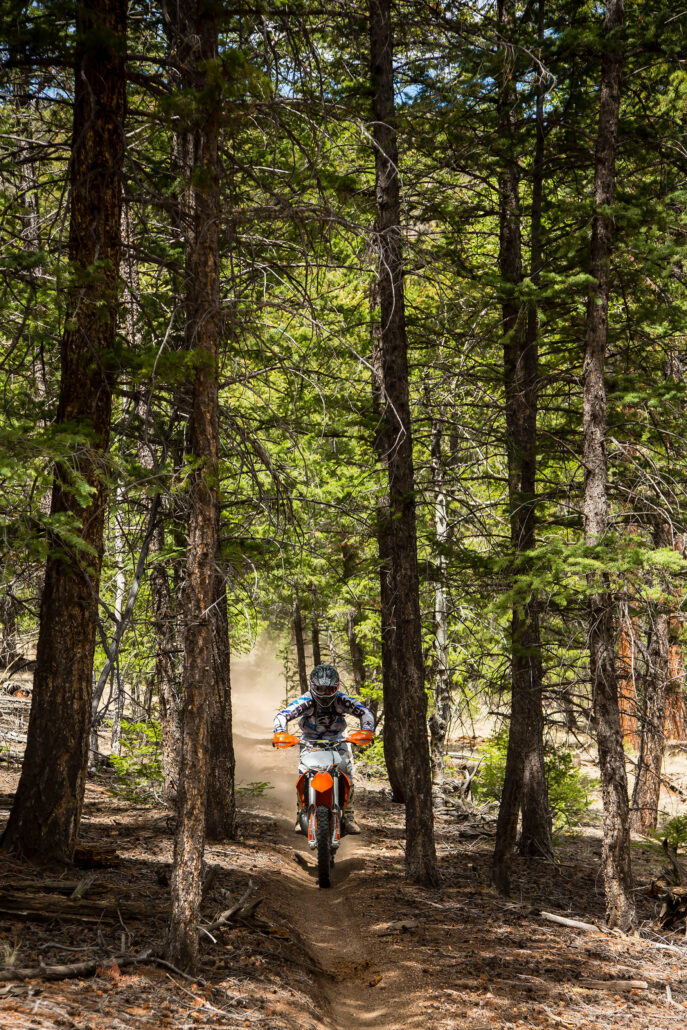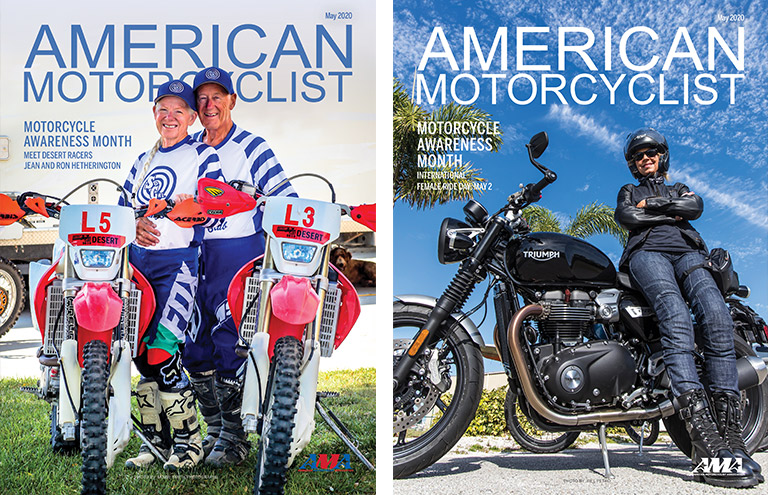AMERICAN MOTORCYCLIST MAY 2020
Motorcycle Awareness
AMA Keeps Spotlight On Motorcycling Issues

2020 lane splitting bills Here are some of the lane-splitting bills introduced this year. Virginia: H.B. 1236. Died on a tie vote in a subcommittee. Expected to make it to a full committee in 2021. Maryland: H.B. 920. Failed in committee, same as in 2019. But the hearing was “at least friendlier,” Sayre said. Utah: Lawmakers took up a couple of bills to adjust technical issues with the lane filtering law. State Rep. Walt Brooks, sponsor of Utah’s lane filtering bill in 2019, H.B. 149, has been very receptive to other legislators contacting him about why he supports the Utah law after he was the victim of a rear-end collision while riding a motorcycle. Rhode Island: The state’s first bill on lane splitting, H.B. 7758, was referred to the Judiciary Committee. Massachusetts: Several bills were introduced that would allow lane splitting and riding on the shoulder of the road. The AMA supports the lane-splitting provisions.
The AMA works hard every day on behalf of its members and all motorcyclists across the country, monitoring proposed rules, pending legislation, zoning changes, public complaints and dozens of other potential threats to the motorcycle lifestyle and the future of motorcycling.
May, designated annually by the AMA as Motorcycle Awareness Month, presents an opportunity to highlight how the AMA staff is keeping lawmakers and regulators at all levels aware of motorcyclists and to update riders on key issues.
A number of those issues remain consistent from year to year, either because there are simply no short-term solutions or because certain lawmakers or lobbyists continue to oppose our efforts, despite public resistance or even vetoes by governors.
Examples include increased ethanol in our fuel and increased availablity in the marketplace, health insurance exclusions, land use issues, excessive exhaust sound and others.
But the two issues the AMA expects to dominate the motorcyclists’ rights landscape in 2020 are lane splitting and off-road trail permit reciprocity.
Lane Spitting
After California formalized its permission for motorcyclists to ride between lanes of traffic in 2016—after decades of tacitly allowing the practice—a wave of proposals cascaded across the country, with states from Hawaii to Oregon to Texas to Tennessee to Virginia considering legislation.
In 2019, Utah legalized lane filtering, which restricts riders to moving between lanes of stopped vehicles.
But, so far, those are the only two states where motorcyclists can legally protect themselves from rear-end collisions and help reduce traffic congestion by using the empty space on America’s multilane highways.
“I expect to see a handful of states take the issue up in 2020 and 2021, including some that had never considered it before,” said Mike Sayre, AMA director of government relations. “ABATE and some other state motorcycle rights organizations are becoming involved, and the AMA welcomes their efforts. We stand ready to help any organization or individual rider who is working to get lane splitting or lane filtering approved in their states.”
By March, legislatures in Hawaii, Virginia, Maryland, Rhode Island and Massachusetts have taken up bills that would enable motorcyclists to split lanes or filter through traffic.
“We’ve seen language that is very specific and some that leaves it up to state agencies to write guidelines,” Sayre said. “We have seen differences in the practice to be permitted, for example splitting versus filtering. And there are some bills that even include provisions for riding on the shoulder of roads, which the AMA does not support.
“I think bills that are more specific and more restrictive will have a better shot at passing, because it is easier to reassure legislators that they will retain control over the practice by spelling it out, and the practice won’t be too disruptive if it is restricted to mostly stopped traffic situations.”
The AMA’s support for lane splitting and lane filtering derives from the findings of two respected research studies.
The 1981 Hurt Report, the most comprehensive motorcycle crash causation study to date, noted that, “Moderate or heavy traffic was the situation at 59.2 percent of the accidents [studied].” Reducing a motorcyclist’s exposure to vehicles that are frequently accelerating and decelerating on congested roadways can be one way to reduce rear-end collisions for those most vulnerable in traffic.
In 2015, the University of California at Berkeley published a report that concluded that motorcyclists who split lanes in heavy traffic are significantly less likely to be struck from behind by other motorists, are less likely to suffer head or torso injuries and are less likely to sustain fatal injuries in a crash.
Sayre is optimistic about the long-term prospects for lane spitting to become legal and popular in more states, especially in those with large urban areas and heavily congested traffic.
“Each success will beget more,” Sayre said. “Even just making it out of a committee in one state might be enough to convince a neighboring state to go a little further.
“We might end up with a hodgepodge of different rules, but I’m hopeful that a baseline of ‘traffic is stopped or very slow, so motorcycles can move between cars slightly faster than the speed of traffic’ one day will apply in most places.”
Reciprocity
 The AMA supports responsible recreational access to public lands for the use of off-highway vehicles, including off-highway motorcycles, dual-sport motorcycles and all-terrain vehicles and believes that access should be administered by professional land managers to meet the needs of participants, protect the land and promote responsible use.
The AMA supports responsible recreational access to public lands for the use of off-highway vehicles, including off-highway motorcycles, dual-sport motorcycles and all-terrain vehicles and believes that access should be administered by professional land managers to meet the needs of participants, protect the land and promote responsible use.
But the issue of access is getting trickier.
More states are examining the impact of out-of-state visitors who use their trail systems and riding areas, yet pay nothing directly to the states to support riding opportunities.
And some states are developing systems to try to capture additional revenue through permit and registration fees.
A Utah law ending reciprocity became effective in January. And on March 12, Washington state legislators forwarded a bill to the governor for consideration that limits reciprocity to residents of states that do not border Washington and that do not charge retail sales or use taxes on off-road vehicles.
While U.S. states recognize and honor car and truck registrations and license plates from other states, such reciprocity for trail permits is beginning to fade.
“This is occurring now,” said Chris Gamache, chief of the New Hampshire Bureau of Trails. “Most of the Northeast states have not had reciprocal registrations for years, and the trend is that most will not honor other registrations in the future.
“Unlike boats and cars, there is no federal funding for trails—other than the Recreational Trails Program—and no mandates to allow free travel between states,” he said. “Each state runs their own trail program and, typically, that is funded from their registration programs. More people traveling for riding was resulting in more visitors and more trail impacts, and reciprocity meant no funds in those riding areas from visitors.”
Karen Umphress—principal of UP! Outside, coordinator of the AMA State Chapter for Minnesota, longtime OHV advocate and the recipient of a 2019 Friend of the AMA Award—said the issue has two primary components: The type of trail program (or lack of a program) a state has; and the question of who should pay for the trails.
“For the first issue, the types of programs are generally speaking, a registration program, a titling program, a rider identification program, or no program,” she said.
Here is a breakdown of programs:
In a registration program, a unique identification number is assigned to a machine, and the vehicle is allowed to traverse certain lands that would not otherwise be open to it.
A titling program is one in which the rider and the machine are both recorded, similar to car and truck registration and licensing. Often there is an insurance requirement and encounters with enforcement are recorded on the riders driving record. Some states that title a machine allow the machine on select public roads, and some states do not.
A rider identification program is similar to a fishing license. The rider is registered, not the vehicle. So a family of three owning one machine would need three registrations, one for each rider. This is almost always used for out-of-state residents, Umphress said.
And then there are states with no program.
“You can probably guess from reading the descriptions where some of the difficulties lie in reciprocity,” Umphress said. “How do you create a reciprocity program between a state which requires titling and a state that only requires registration? How do you manage riders expectations between the states where you can ride on the road versus the states that don’t allow it?”
Another issue confronts residents of states with no registration or permitting program who want to ride in a state with a formal program.
“It is easy to say that riders in states that don’t have a program can just register or title in the state in which they want to ride,” Umphress said. “However, most state programs are administered by agencies that are open Monday through Friday, 9 a.m. to 4:30 p.m. Most out-of-state riders are coming for weekends or after work when those agencies are not open.” So they can’t easily register.
The other major issue with reciprocity is determining who pays for a state’s trail system.
Trails systems are operated and largely funded by the states.
Even the federal Recreational Trails Program channels its money through the state agency in charge of the trail system.
“Some states have great trail systems and programs. Some states have moderate trails and programs. And some states have nothing,” Umphress said. “Reciprocity works when there is an even playing field, and that is not the case with many OHV programs.”
States must weigh the positive economic impact from out-of-state visitors who spend money on food, fuel and lodging against the impact on the trails that comes with increased use.

Many riders from neighboring states simply make day trips to use the trails, creating little or no economic impact on nearby communities.
“Another thing to consider is the cost of enforcement versus the revenue generated by requiring licensing or registration of out-of-state riders and vehicles,” said Nick Haris, AMA western states representative.
He said the recent move by Arizona to end reciprocity for California riders is more likely to harm Arizona residents than those from their neighboring states.
“Arizona riders love to cross the state line to ride at Glamis (Imperial Sand Dunes in Southern California),” Haris said. “And not nearly as many California riders go to Arizona. So, if Arizona starts requiring a fee from California riders, they may just stop going.”
California is considering a bill that would offer reciprocity to states that exempt riders and vehicles with a California registration or permit.
If Arizona ends reciprocity, its residents would have to buy a California stare visitor permit—in addition to the required permit from the U.S. Bureau of Land Management—to continue to ride Glamis.
Gamache said most riders understand that without registration fees, there is no funding to build and maintain trails and riding areas. But a big-picture solution could prove difficult.
2020 reciprocity bills
California: A.B. 2761 would remove reciprocity for vehicles registered in states that do not exempt California-registered vehicles from that state’s registration or identification laws.
Kentucky: S.B. 75 would require a $30 resident or $50 nonresident fee for OHV road use.
Oklahoma: H.B. 3415 Defines “nonresident,” but doesn’t address nonresidents’ registration or fees for use of off-road vehicles on the roads.
Massachusetts: H. 2975 proposes that residents and nonresidents be exempt from registration. “All participants of a sanctioned race, rally or event that is sanctioned by a bona fide state, regional, national or international sanctioning body shall be exempt from the requirements of this section.”
Vermont: H. 942 would make out-of-state residents subject to the same requirements as Vermonters, including obtaining a valid trail access decal.

